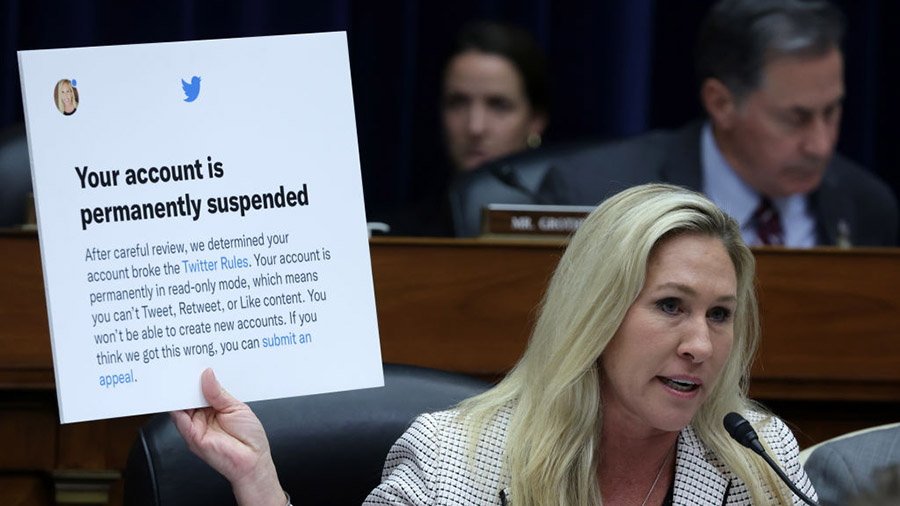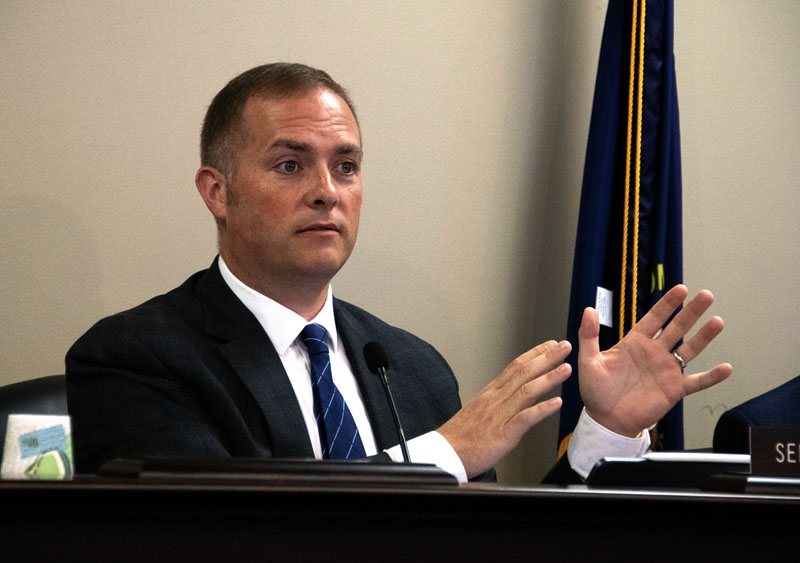Table of Contents
Transparency and accountability are fundamental principles in any democratic society. They ensure that institutions entrusted with public welfare operate with integrity and efficiency. One such institution, often overlooked, is the American jail system. In this article, we will explore the critical role of transparency and accountability in overseeing American jails and how they can lead to improved conditions for both inmates and the community.
Transparency and accountability are not just ideals; they are the bedrock upon which a thriving democratic society stands. When we think about transparency and accountability, it’s essential to recognize that these principles should extend to all institutions, including those like the American jail system, which sometimes operate in the shadows of public awareness.
In the context of American jails, transparency involves shedding light on various aspects of their operations, from the treatment of inmates to the allocation of resources. This transparency can take various forms, such as publicly accessible reports on jail conditions, budgets, and the demographics of the incarcerated population. When the public has access to this information, it becomes easier to identify areas that may require reform or improvement.
Accountability goes hand in hand with transparency. It means that those responsible for the functioning of the jail system are held answerable for their actions and decisions. This includes not only jail administrators but also policymakers and elected officials who shape the system through legislation and funding decisions. Accountability mechanisms can involve regular audits, oversight committees, or even citizen input to ensure that the jail system aligns with community values and needs.
Transparency and accountability in American jails have the potential to bring about significant positive changes. First and foremost, it can lead to improved conditions for inmates. When jail administrators know that their actions are subject to public scrutiny, they are more likely to prioritize humane treatment, safety, and rehabilitation programs. This, in turn, can contribute to reducing recidivism rates and making communities safer.
Moreover, transparency and accountability can build public trust in the criminal justice system. When citizens see that their concerns are heard and acted upon, they are more likely to support policies that focus on rehabilitation and restorative justice, rather than punitive measures.
In conclusion, transparency and accountability are not just buzzwords but vital pillars of a well-functioning democracy. Extending these principles to the American jail system can lead to a more just and equitable society, where both inmates and the community benefit from a system that operates with integrity and efficiency. By fostering open dialogue and informed decision-making, we can work towards a future where the criminal justice system truly serves the best interests of all.
Looking for more insights? You’ll find them right here in our extended coverage: Sens. Ossoff, Braun Launch Bipartisan Working Group to Examine …
The Importance of Oversight
American jails are responsible for the detention of individuals awaiting trial or serving short sentences. While their primary function is to ensure public safety and manage detainees, they also have a duty to treat inmates with respect, provide essential services, and protect their rights. Effective oversight mechanisms are essential to prevent abuses, maintain public trust, and ensure that jails fulfill their obligations.
nullFor a comprehensive look at this subject, we invite you to read more on this dedicated page: National Security Subcommittee to Hold Hearing on Unidentified …

Access to Information
Transparency begins with open access to information about jail operations, policies, and procedures. This includes data on inmate populations, staffing levels, budget allocations, and disciplinary actions. Making this information readily available to the public and relevant authorities fosters accountability.
Transparency begins with open access to information about jail operations, policies, and procedures. This includes data on inmate populations, staffing levels, budget allocations, and disciplinary actions. Making this information readily available to the public and relevant authorities fosters accountability.
When the public and relevant oversight bodies have access to comprehensive data on jail operations, it serves as a powerful tool for accountability. Here are some key points to consider when extending this idea:
Enhanced Public Trust: Transparent access to information about jail operations builds public trust. When citizens can see how their tax dollars are being spent and understand the inner workings of the criminal justice system, they are more likely to have confidence in its fairness and effectiveness.
Reduced Misconduct: Transparency acts as a deterrent against misconduct within correctional facilities. Knowing that their actions and decisions are subject to scrutiny, jail staff and administrators are more likely to adhere to established policies and procedures, reducing the risk of abuse or negligence.
Improved Decision-Making: Access to data on inmate populations and staffing levels allows policymakers to make informed decisions. With a clear understanding of the jail’s demographics and resource allocation, they can make adjustments to address issues such as overcrowding, understaffing, or budgetary inefficiencies.
Early Problem Detection: Transparency enables the early detection of problems within the jail system. By monitoring trends in disciplinary actions or inmate grievances, authorities can identify systemic issues that require attention and reform.
Community Engagement: Open access to information encourages community engagement in criminal justice reform. Informed citizens can advocate for changes and hold elected officials accountable for their positions on jail policies and practices.
Reduced Litigation: When jail operations are transparent, it can lead to fewer legal challenges. Inmates and their families are more likely to be aware of their rights and the procedures governing the facility, which can reduce the likelihood of lawsuits and legal disputes.
Continuous Improvement: Transparency fosters a culture of continuous improvement. When data on jail operations is regularly reviewed and analyzed, it allows for the identification of best practices and areas where reforms are needed, leading to a more efficient and effective correctional system.
In conclusion, transparency in jail operations is essential not only for accountability but also for the fair and just treatment of inmates and the responsible use of taxpayer resources. It promotes a system that is more responsive to the needs of both the incarcerated and the community at large, ultimately contributing to a safer and more equitable society.
If you’d like to dive deeper into this subject, there’s more to discover on this page: Handbook on police accountability, oversight and integrity A …

Monitoring Conditions
Independent oversight bodies, such as citizen review boards or government agencies, should regularly monitor jail conditions. They can inspect facilities, review inmate grievances, and assess compliance with standards and regulations. Their reports should be accessible to the public.
Independent oversight bodies serve as a crucial safeguard within the criminal justice system, ensuring transparency, accountability, and the protection of inmates’ rights. Their role goes beyond routine inspections; they act as a bridge between the incarcerated population, the authorities, and the public.
These oversight bodies, whether composed of citizens or government officials, play a vital role in monitoring jail conditions. Regular inspections of facilities help identify issues such as overcrowding, unsanitary conditions, or instances of abuse. By reviewing inmate grievances, they provide a channel for individuals to voice their concerns and seek resolution. This not only upholds the dignity of those behind bars but also helps prevent potential human rights violations.
Transparency is a cornerstone of effective oversight. Making the reports of these oversight bodies accessible to the public is essential. It empowers communities to hold their criminal justice system accountable, fostering trust and ensuring that necessary reforms are implemented promptly. When citizens have access to information about jail conditions, they can advocate for change and support policies that prioritize rehabilitation and fairness.
Moreover, these oversight bodies can act as early warning systems for systemic issues within the criminal justice system. By documenting trends and patterns in jail conditions, they can help identify areas where policy changes or resource allocation may be needed, ultimately contributing to a more just and humane system.
In sum, independent oversight bodies are essential for maintaining the integrity of our criminal justice system. They not only ensure that jails meet established standards but also serve as a bridge for communication and reform. By making their findings accessible to the public, we create a more transparent and accountable system that benefits everyone involved.
To expand your knowledge on this subject, make sure to read on at this location: POLICE USE OF FORCE: POLICING PRACTICES

Legal Compliance
Jails must adhere to federal and state laws as well as constitutional standards governing inmate rights. Accountability mechanisms ensure that jail staff and administrators are held responsible for any violations, leading to improved inmate treatment and safer facilities.
Jails serve as an integral part of the criminal justice system, responsible not only for confining individuals but also for upholding their rights and ensuring humane treatment. To achieve this, adherence to federal and state laws, along with constitutional standards, is paramount. However, the mere existence of these regulations isn’t enough; it’s the implementation and enforcement through accountability mechanisms that truly drive improvements in inmate treatment and facility safety.
1. Legal Compliance: Jails must operate within the confines of federal and state laws, as well as constitutional standards, which guarantee inmates various rights, including protection from cruel and unusual punishment, access to medical care, due process, and more. Compliance is not optional but a legal obligation that ensures the protection of inmates’ fundamental rights.
2. Accountability Measures: Accountability mechanisms, such as oversight bodies, audits, and reporting procedures, play a pivotal role in monitoring jail operations. These mechanisms hold jail staff and administrators responsible for their actions, creating a culture of transparency and responsibility within the correctional system.
3. Improved Inmate Treatment: When jail personnel know that their actions are subject to scrutiny and that they can be held accountable for violations, it incentivizes them to treat inmates with respect and fairness. This, in turn, leads to improved inmate treatment, reducing instances of abuse, neglect, or other rights violations.
4. Safer Facilities: Accountability mechanisms not only focus on individual actions but also on the overall safety and conditions within the facility. Regular inspections and oversight help identify and rectify issues related to overcrowding, sanitation, security, and healthcare. Safer facilities benefit both inmates and staff, creating a more stable and secure environment.
5. Deterrence: Accountability measures act as a deterrent against misconduct or abuse within jails. When staff members understand the potential consequences of their actions, they are more likely to adhere to the rules and standards, promoting a culture of professionalism and ethical conduct.
6. Public Trust: The existence of robust accountability mechanisms fosters public trust in the criminal justice system. Communities have a vested interest in ensuring that their jails operate justly and safely, and transparency in accountability procedures helps maintain this trust.
7. Legal Repercussions: In addition to internal accountability, violations of inmate rights can lead to legal consequences for jail staff and administrators. Civil lawsuits, criminal charges, and professional sanctions can result from serious violations, further emphasizing the importance of adhering to the law.
In conclusion, jails are essential components of the justice system, and their adherence to legal and constitutional standards is non-negotiable. Accountability mechanisms not only enforce these standards but also contribute to a more just and humane correctional system, where inmates are treated with dignity, rights are protected, and facilities are safe and secure.
Don’t stop here; you can continue your exploration by following this link for more details: Executive Order on Advancing Effective, Accountable Policing and …

Effective Complaint Systems
Inmates should have accessible and confidential avenues to report grievances and mistreatment. Accountability mechanisms ensure that complaints are thoroughly investigated, and appropriate actions are taken.
nullIf you’d like to dive deeper into this subject, there’s more to discover on this page: POLICE USE OF FORCE: POLICING PRACTICES

Use of Force and Restraints
Transparency and accountability extend to the use of force and restraints. Oversight bodies should scrutinize incidents involving force, review policies, and recommend necessary changes to minimize the risk of abuse.
Transparency and accountability are essential principles that must permeate every aspect of law enforcement, including the use of force and restraints. When it comes to the use of force, it is imperative that oversight bodies play a vigilant role in scrutinizing every incident. This scrutiny should be meticulous and impartial, aiming to uncover any instances where force may have been excessive or unjustified.
Moreover, these oversight bodies should not stop at just investigating individual incidents. They must also take a broader view by reviewing and assessing law enforcement policies related to the use of force. By doing so, they can identify systemic issues that may be contributing to unnecessary confrontations or abusive behavior.
Recommendations for necessary changes are a critical component of this process. Oversight bodies should not only identify problems but also actively work to propose and advocate for policy reforms. These reforms should be designed to minimize the risk of abuse, protect the rights and safety of individuals, and enhance public trust in law enforcement.
In essence, a commitment to transparency and accountability in the use of force and restraints is not just a safeguard against abuse but also a means to continuously improve law enforcement practices. It’s a proactive approach that strives to prevent misconduct before it occurs, thereby promoting a more just and equitable society for all.
Explore this link for a more extensive examination of the topic: Police Use of Force and Misconduct in California – Public Policy …

Reducing Abuse
When jails know they are being watched and held accountable, instances of inmate abuse and misconduct tend to decrease. This benefits both inmates and the staff, creating a safer environment for all.
When jails know they are being watched and held accountable, instances of inmate abuse and misconduct tend to decrease. This benefits both inmates and the staff, creating a safer environment for all.
Transparency and Accountability: Enhanced oversight and accountability mechanisms, such as independent monitoring agencies, regular audits, and public reporting, contribute to a culture of transparency within correctional facilities. This openness not only deters abusive behavior but also fosters a sense of trust and confidence in the criminal justice system.
Improved Staff Training: Accountability measures often come with requirements for ongoing staff training in de-escalation techniques, conflict resolution, and ethical conduct. Well-trained correctional officers are better equipped to handle challenging situations without resorting to excessive force.
Inmate Rehabilitation: Reduced abuse and misconduct create a more conducive environment for rehabilitation programs within jails. Inmates are more likely to engage in educational, vocational, and counseling initiatives when they feel safe and supported, increasing their chances of successful reintegration into society upon release.
Safer Work Environment: Correctional staff members also benefit from increased accountability. A culture of accountability fosters professionalism and ensures that staff members are not unfairly blamed for incidents beyond their control. This can lead to lower staff turnover rates and improved job satisfaction.
Legal and Ethical Compliance: Knowing they are under scrutiny, jails are more likely to adhere to legal and ethical standards, avoiding potential lawsuits and legal complications. This, in turn, saves taxpayer money and ensures that resources are used more efficiently.
Community Trust: The public’s perception of the criminal justice system improves when there is transparency and accountability in jails. Communities are more likely to support initiatives aimed at inmate rehabilitation and reentry, which can contribute to lower recidivism rates and enhanced public safety.
In summary, a system of accountability in jails not only reduces instances of abuse and misconduct but also creates a more positive and effective environment for both inmates and staff. It promotes the principles of justice, safety, and rehabilitation that are essential for a fair and humane correctional system.
For additional details, consider exploring the related content available here Executive Order on Advancing Effective, Accountable Policing and …

Public Trust
Transparent jail operations and accountable management build public trust. Communities are more likely to support rehabilitation programs and reentry initiatives when they believe the justice system is fair and just.
Transparent jail operations and accountable management are the bedrock of a justice system that fosters public trust. When the inner workings of correctional facilities are open and transparent, it sends a powerful message to communities that their concerns and values are being taken seriously.
This trust, in turn, has a profound impact on the success of rehabilitation programs and reentry initiatives. When people believe the justice system is fair and just, they are more willing to support efforts aimed at helping those who have been involved in the criminal justice system reintegrate into society.
Communities become more receptive to initiatives that focus on education, job training, and mental health support for individuals who have been incarcerated. They recognize that by investing in these programs, they are not only promoting the well-being of individuals but also contributing to the overall safety and prosperity of their communities.
Moreover, transparent jail operations and accountable management serve as a deterrent against misconduct and abuse within correctional facilities. When there is transparency, the potential for human rights violations and corruption diminishes, further reinforcing the belief that the justice system is fair and just.
In essence, the relationship between transparent jail operations, accountable management, and community support for rehabilitation and reentry is a symbiotic one. As trust in the justice system grows, so does the willingness of communities to collaborate in the pursuit of a more equitable and effective approach to criminal justice. This partnership ultimately paves the way for more successful reintegration and a safer, more inclusive society for all.
To delve further into this matter, we encourage you to check out the additional resources provided here: High-quality health systems in the Sustainable Development Goals …

Inmate Rehabilitation
Improved conditions and treatment of inmates can lead to better outcomes, including reduced recidivism rates. Inmates who are treated with dignity and provided with opportunities for rehabilitation are more likely to reintegrate into society successfully.
nullIf you’d like to dive deeper into this subject, there’s more to discover on this page: Sens. Ossoff, Braun Launch Bipartisan Working Group to Examine …

Efficiency and Cost-Effectiveness
Accountability can lead to more efficient jail operations, reducing the financial burden on taxpayers. It can also identify areas where resources can be better allocated.
Accountability within the realm of corrections and jail operations serves as a cornerstone for improved efficiency and resource management. By holding institutions accountable for their actions and decisions, we not only ensure transparency but also create a framework for continuous improvement.
Efficiency gains can significantly benefit taxpayers by reducing the financial burden associated with maintaining correctional facilities. When accountability mechanisms are in place, administrators are encouraged to identify areas of waste, redundancies, or ineffective practices. These insights can then drive strategic reforms, leading to cost savings without compromising safety or security.
Moreover, accountability doesn’t solely revolve around financial aspects. It extends to the overall quality of services provided to inmates, including education, healthcare, and rehabilitation programs. Through rigorous evaluation and oversight, we can pinpoint areas where resources can be better allocated to maximize the impact on inmate rehabilitation and reduce recidivism rates.
In essence, a culture of accountability not only safeguards public finances but also paves the way for a more effective and humane criminal justice system, where the focus is on rehabilitation and reintegration, ultimately benefiting both society and those within the system.
Looking for more insights? You’ll find them right here in our extended coverage: POLICE USE OF FORCE: POLICING PRACTICES

Transparency and accountability are not optional in the oversight of American jails; they are essential for ensuring justice, safety, and respect for the rights of both inmates and the community. By implementing robust oversight mechanisms and making jail operations more transparent, we can work towards a criminal justice system that truly serves the interests of all citizens. It’s a step towards a society where justice is not only served but is seen to be served, fostering trust, rehabilitation, and better outcomes for everyone involved.
Expanding on the idea of the importance of transparency and accountability in jail oversight:
Enhancing Rehabilitation Programs: Transparent and accountable jail systems can better allocate resources to inmate rehabilitation programs. When the public can see that their tax dollars are being used effectively to help inmates reintegrate into society, it fosters support for these crucial initiatives. This, in turn, reduces the likelihood of reoffending and contributes to overall community safety.
Preventing Wrongful Convictions: Robust oversight mechanisms can help identify cases of wrongful convictions or unjust treatment of inmates. By regularly reviewing cases and ensuring due process is followed, we can minimize the chances of innocent individuals being incarcerated and promote a more just and fair criminal justice system.
Building Community Engagement: Transparency invites community engagement in the criminal justice system. When citizens are informed about jail operations and policies, they are more likely to participate in dialogues about reform and contribute valuable insights. This collaborative approach can lead to innovative solutions for improving jail conditions and the broader justice system.
Minimizing Corruption and Misconduct: Accountability measures deter corruption and misconduct within jails. When jail staff know that their actions are subject to scrutiny, they are less likely to engage in unethical behavior. This promotes a culture of professionalism and ethics within the corrections system.
Restoring Trust in Law Enforcement: A transparent and accountable jail system is a critical component of restoring trust in law enforcement agencies. Recent high-profile cases of abuse and misconduct have eroded public confidence. By demonstrating a commitment to transparency and accountability, authorities can begin rebuilding that trust.
International Human Rights Compliance: The international community recognizes the importance of transparency and accountability in correctional facilities as part of upholding human rights standards. Complying with these standards not only enhances the reputation of the United States but also sets an example for other countries striving for improved jail conditions.
In conclusion, the call for transparency and accountability in American jails is not just a matter of policy; it’s a fundamental principle that can shape the very foundations of our criminal justice system. It ensures that justice is served not only behind closed doors but also in the eyes of the public, leading to a more equitable, safer, and rehabilitative system for all citizens.
For additional details, consider exploring the related content available here Transforming Prisons through Research: An Agenda for Sweeping …
More links
For a comprehensive look at this subject, we invite you to read more on this dedicated page: Sens. Ossoff, Braun Launch Bipartisan Working Group to Examine …
